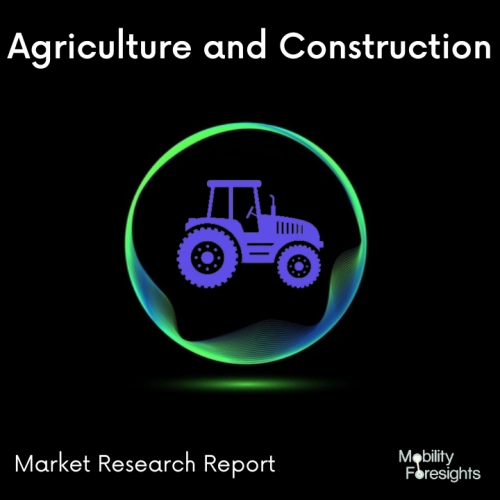
- Get in Touch with Us

Last Updated: Apr 25, 2025 | Study Period: 2023-2030
Major commercial as well as civil projects, as well as housing construction projects of practically any size, all require the use of heavy equipment. Enough operating elements on heavy machinery are exposed to environmental degradation under various working situations.

If not stopped in time, such exposure can cause significant issues and harm by contaminating the lubricants.
Heavy truck, bus, agricultural, and construction equipment manufacturing are separate industries from the production of automobiles, however some automakers also produce for both markets, and the same companies also produce both types of equipment.
The essential cornerstone for constructing the desperately needed infrastructure around the world is heavy machinery. However, some of the most handled machinery on the planet are hefty ones. Some of the most hazardous settings on earth are where these machines operate.
Heat, cold, rain, humidity, muck, and other elements subject the machine to severe wear and tear and impair its functionality. The main reason electrification is being adopted is to cut down on fuel usage.
For the smooth functioning of autonomous manufacturing and automobiles, automotive manufacturers like Volvo are collaborating with technology and telecommunications firms like Telia and Ericsson to establish a 5G network.Due to the increasing building activity in the region, the market for electric off-highway equipment in the Asia Pacific is anticipated to expand quickly.
Heavy machinery is an expensive asset that takes a while to recoup the initial investment and turn a profit. Safety of the machine, the persons using the machine, as well as those working close to the equipment must be prioritised in light of this.
To guarantee the machine is operating safely, preventive and routine maintenance is necessary. Having to cope with broken or damaged parts and any human injuries that could result from poor maintenance saves money.
Cummins is a leading mobiliser of the equipment in the market. The latest integration has been the X12, a motor created for the medium-bore industry, offers clients who typically use 11â13 litre powertrains the next level of economy and production.
Customers will enjoy the lightest integrated drivetrain option currently available and class-leading maintenance intervals when coupled with the Endurant HD transmission. The Productivity series is the best choice for heavy-duty, industrial, or multipurpose applications.
Honda Engines is part of the component manufacture trending companies in the current industry. The GXE2.0S is a sophisticated electrified power unit with excellent efficiency and performance that offers power output comparable to that of gasoline engines with the ease of battery power and friendly features like low noise, vibration, and indoor usability.
It contains a quick-charging lithium-ion battery for optimal operating productivity and a high-efficiency, high-power, three-phase brushless DC motor for optimum performance and dependability. The motor has an improved cooling system and is resistant to water and dust for maximum longevity in tough settings.
| Sl no | Topic |
| 1 | Market Segmentation |
| 2 | Scope of the report |
| 3 | Abbreviations |
| 4 | Research Methodology |
| 5 | Executive Summary |
| 6 | Introduction |
| 7 | Insights from Industry stakeholders |
| 8 | Cost breakdown of Product by sub-components and average profit margin |
| 9 | Disruptive innovation in the Industry |
| 10 | Technology trends in the Industry |
| 11 | Consumer trends in the industry |
| 12 | Recent Production Milestones |
| 13 | Component Manufacturing in US, EU and China |
| 14 | COVID-19 impact on overall market |
| 15 | COVID-19 impact on Production of components |
| 16 | COVID-19 impact on Point of sale |
| 17 | Market Segmentation, Dynamics and Forecast by Geography, 2023-2030 |
| 18 | Market Segmentation, Dynamics and Forecast by Product Type, 2023-2030 |
| 19 | Market Segmentation, Dynamics and Forecast by Application, 2023-2030 |
| 20 | Market Segmentation, Dynamics and Forecast by End use, 2023-2030 |
| 21 | Product installation rate by OEM, 2023 |
| 22 | Incline/Decline in Average B-2-B selling price in past 5 years |
| 23 | Competition from substitute products |
| 24 | Gross margin and average profitability of suppliers |
| 25 | New product development in past 12 months |
| 26 | M&A in past 12 months |
| 27 | Growth strategy of leading players |
| 28 | Market share of vendors, 2023 |
| 29 | Company Profiles |
| 30 | Unmet needs and opportunity for new suppliers |
| 31 | Conclusion |
| 32 | Appendix |